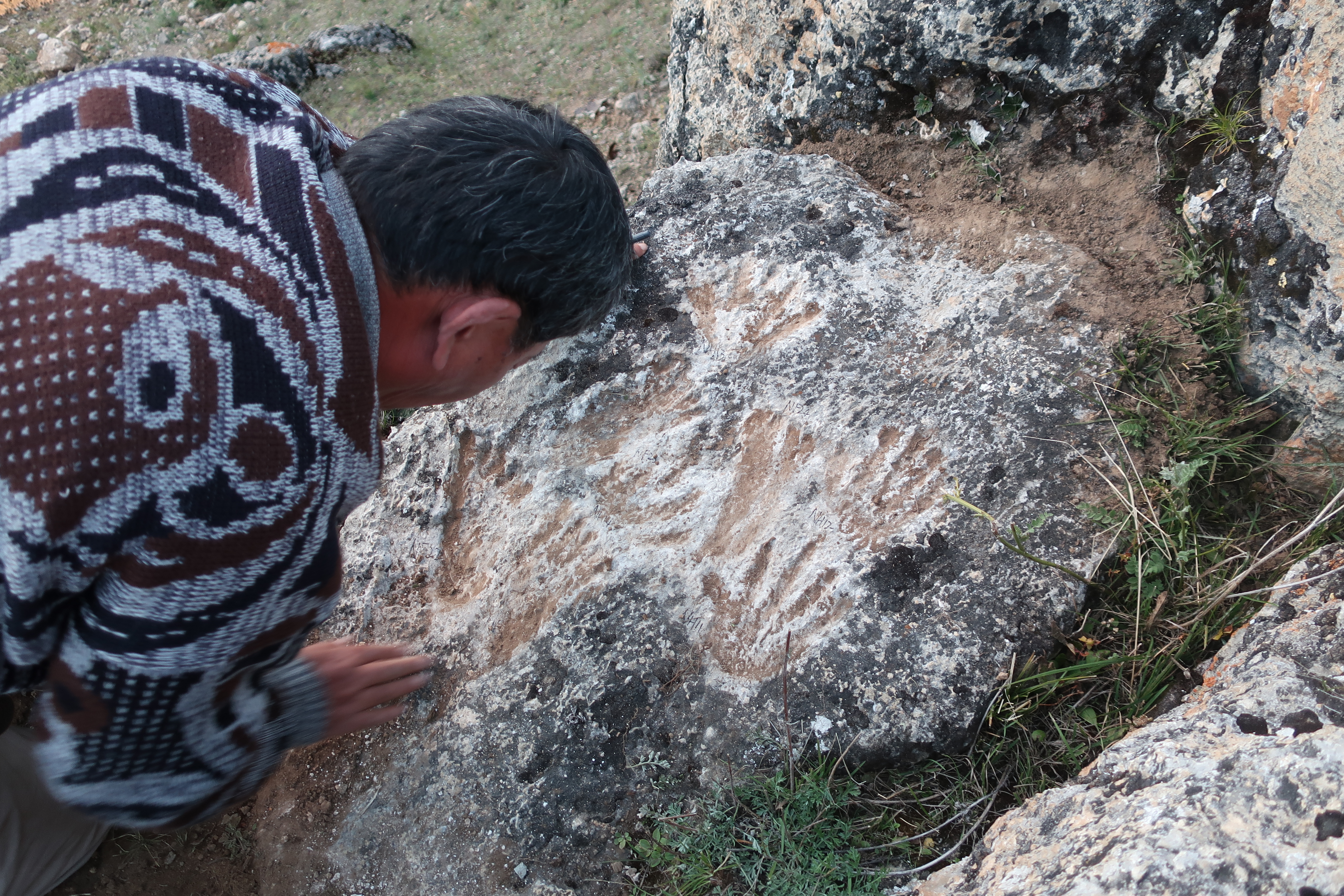Chinese Scientist Hopes to Conserve What May Be the World's Oldest Art

Dr. David Zhang, a scientist from Guangzhou University in China, examines the footprints and handprints on the travertine rock in Quesang, Tibet. These impressions are thought to be the world's oldest parietal art. Courtesy Dr. David Zhang
BY CHAD DE GUZMAN
OCTOBER 18, 2021 11:38 PM EDT
A scientist from Guangdong, China plans to appeal to the Tibetan government to conserve recently discovered fossils of handprints and footprints on a rock on the world’s highest plateau—because they may be the oldest prehistoric art ever recorded and the earliest evidence of human life in the region.
Dr. David Zhang, who found the impressions with his research team in Quesang on the Tibetan Plateau, said nearby villagers have already warded off strangers from visiting their research site.
Zhang, the lead researcher from Guangzhou University, discovered the impressions on a type of limestone called travertine in October 2018. The five footprints and handprints were located near a hot spring in Quesang some 80 km away from Lhasa but did not resemble tracks left by travelers; they were grouped together like a mosaic.
Using uranium series dating, Zhang’s team found that the tracks are between 169,000 and 226,000 years old, which dates back to the middle of the Pleistocene, or around the Earth’s last ice age. They also extrapolated, based on the size of the modern human hands and feet, that the impressions could have been made by two children aged 7 and 12.
More:
https://time.com/6107313/oldest-prehistoric-art/
